Abstract
Two experiments investigated whether steady-state interactions in multiple schedules depend exclusively on the following schedule of reinforcement. Experiment 1 used a four-component multiple schedule in which two components were associated with the same constant schedule of reinforcement, and where rate of reinforcement was varied in the component that followed one of these. Contrast effects were reliable only in the component that preceded the point of reinforcement variation, although some contrast did occur otherwise. In those instances where contrast other than the following-schedule effect did occur, it was accounted for by the effect of the preceding schedule, an effect for which there were consistent individual differences among subjects, and which varied with component duration. Experiment 2 used a three-component schedule, in which reinforcement rate was varied in the middle component. The results were consistent with Experiment 1, as the following-schedule effect was the only consistent effect that occurred, although an effect of the preceding schedule did occur for some subjects under some conditions, and was especially evident early in training. The conclusion from both experiments is that there is no general effect of relative rate of reinforcement apart from the sum of the effects of the preceding and following schedules, and that the following-schedule effect is the fundamental cause of steady-state interactions.
Keywords: contrast, multiple schedules, component duration, VI schedules, matching, signaled reinforcement, pigeons
Full text
PDF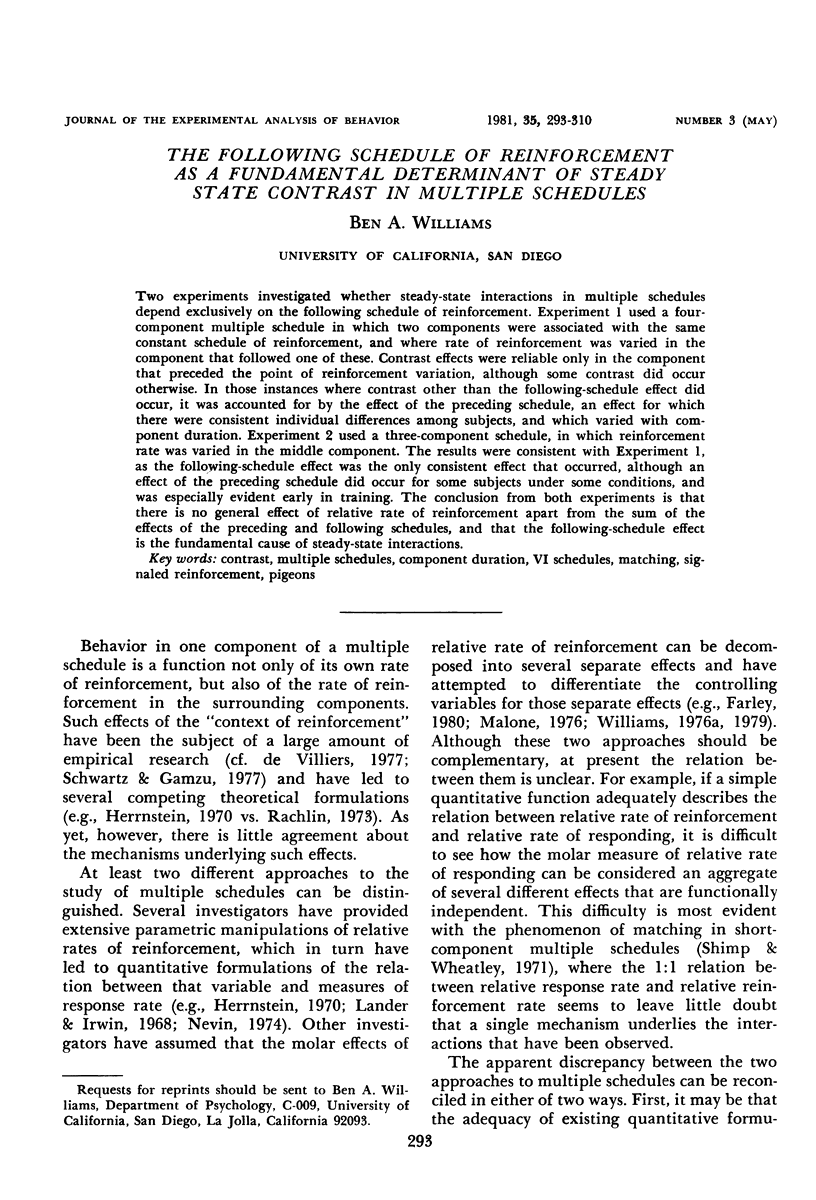
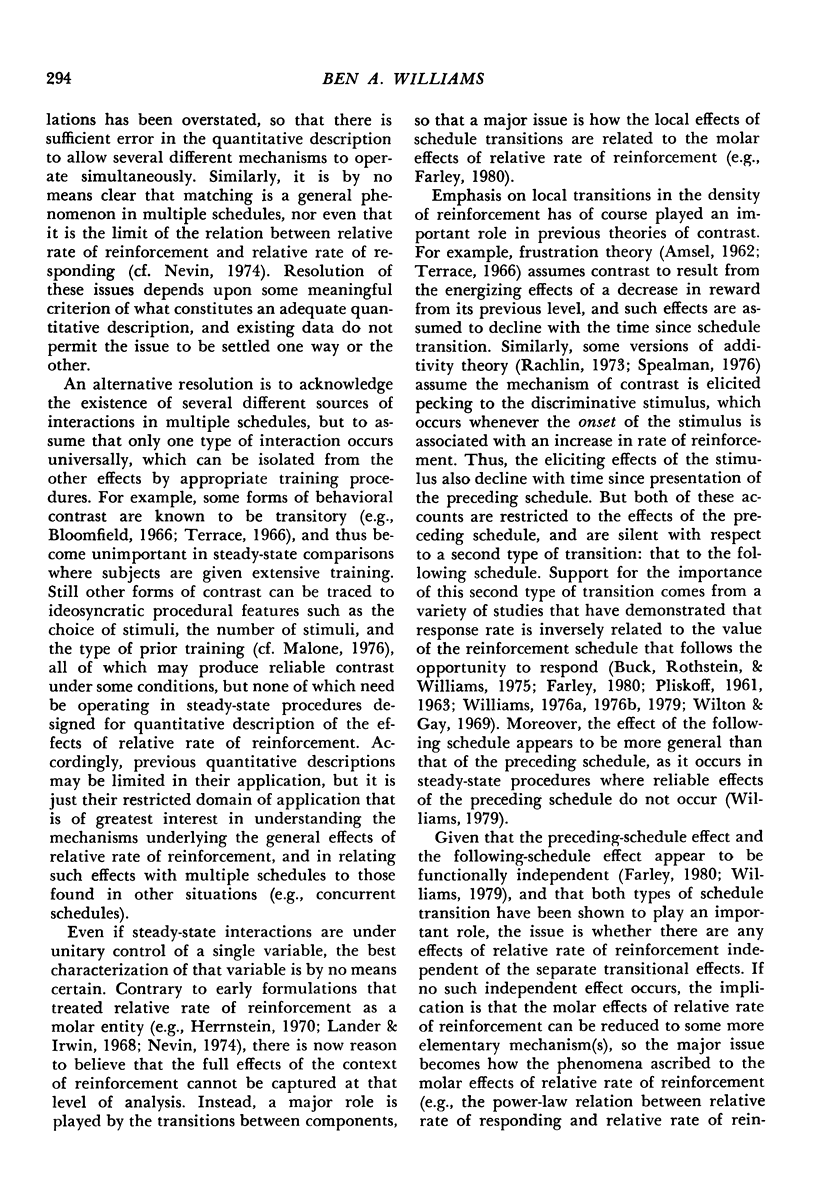
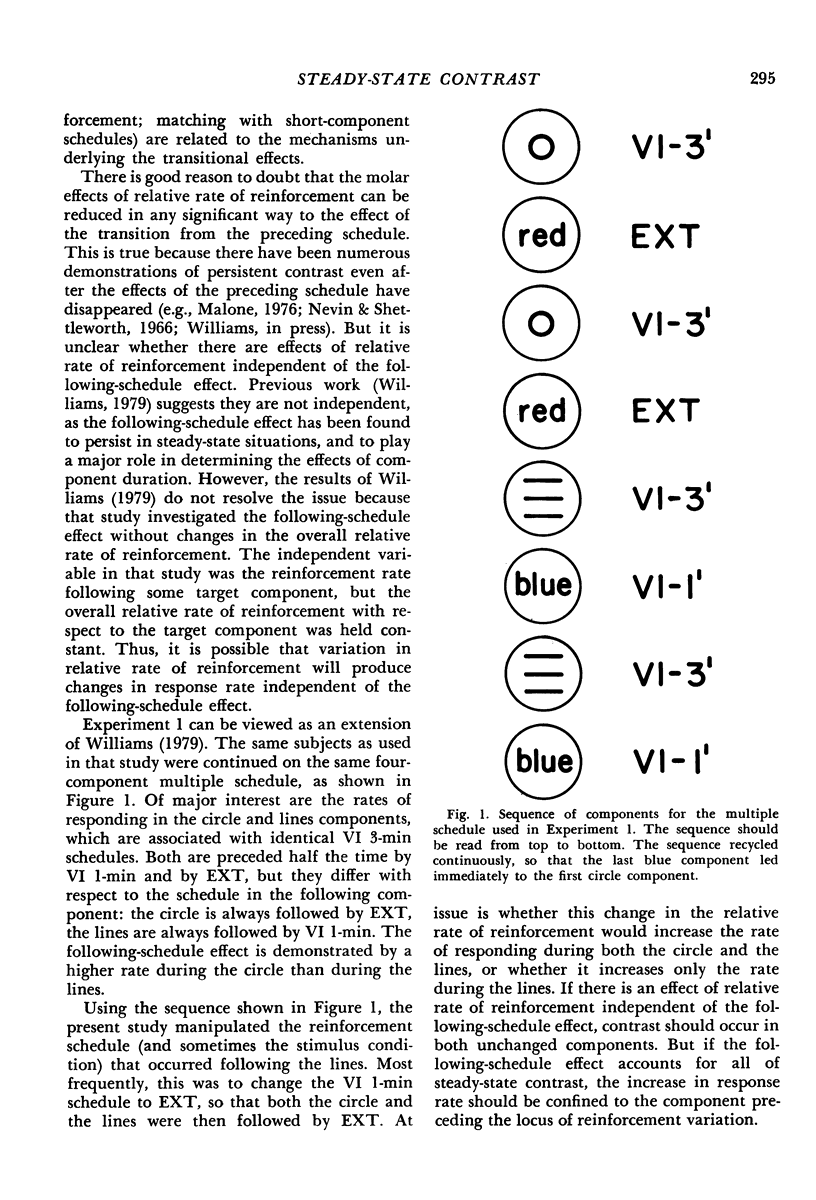
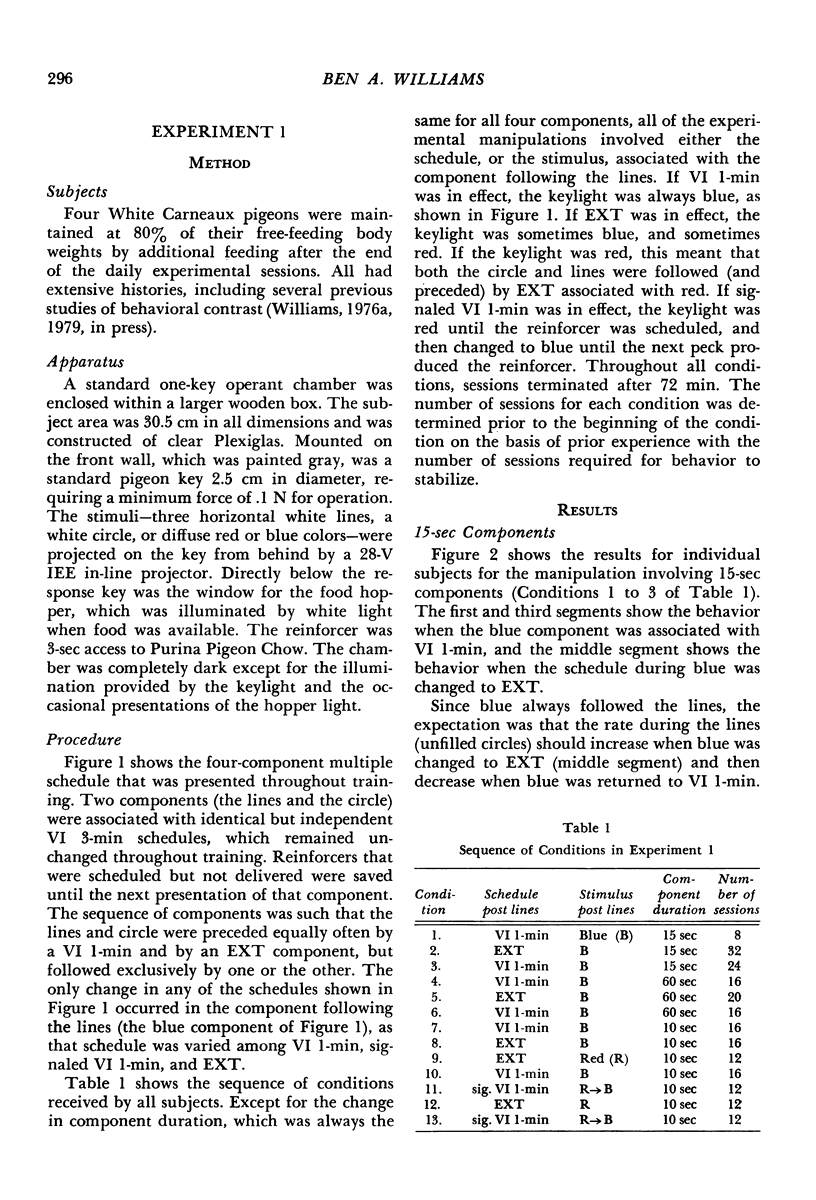
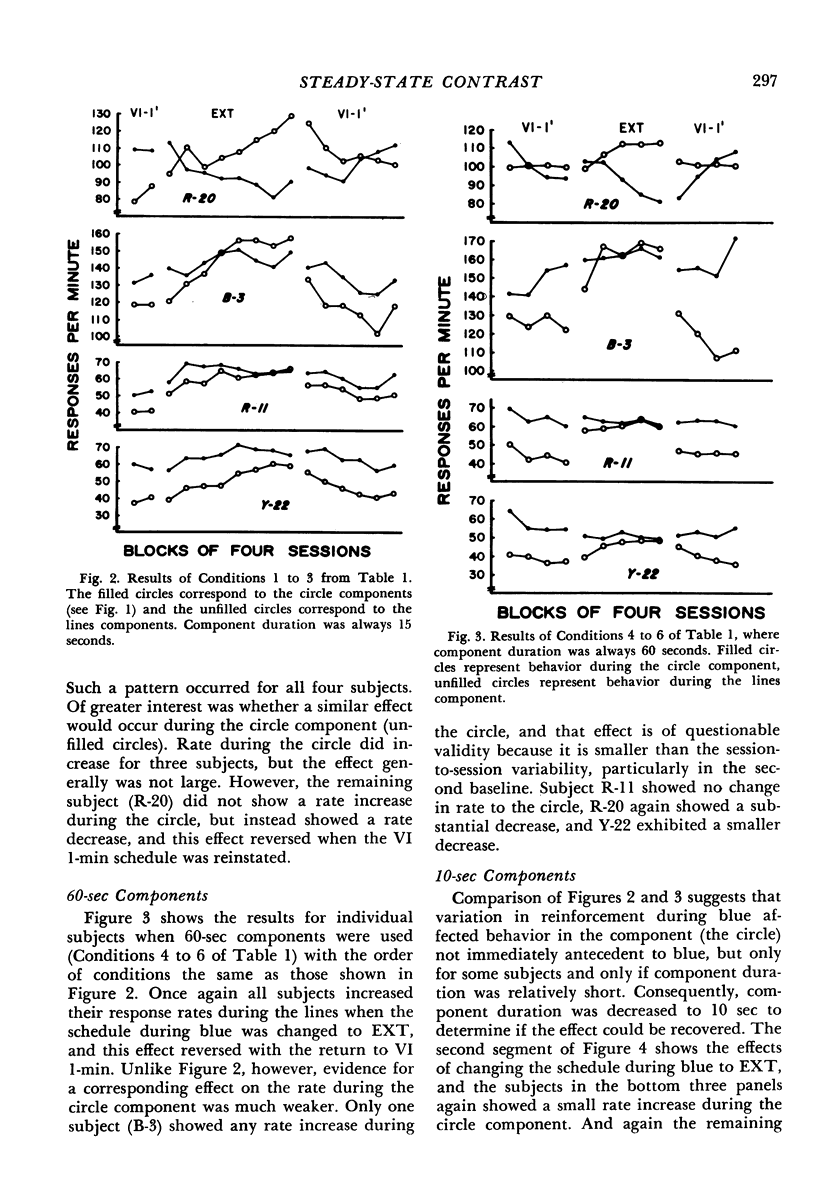
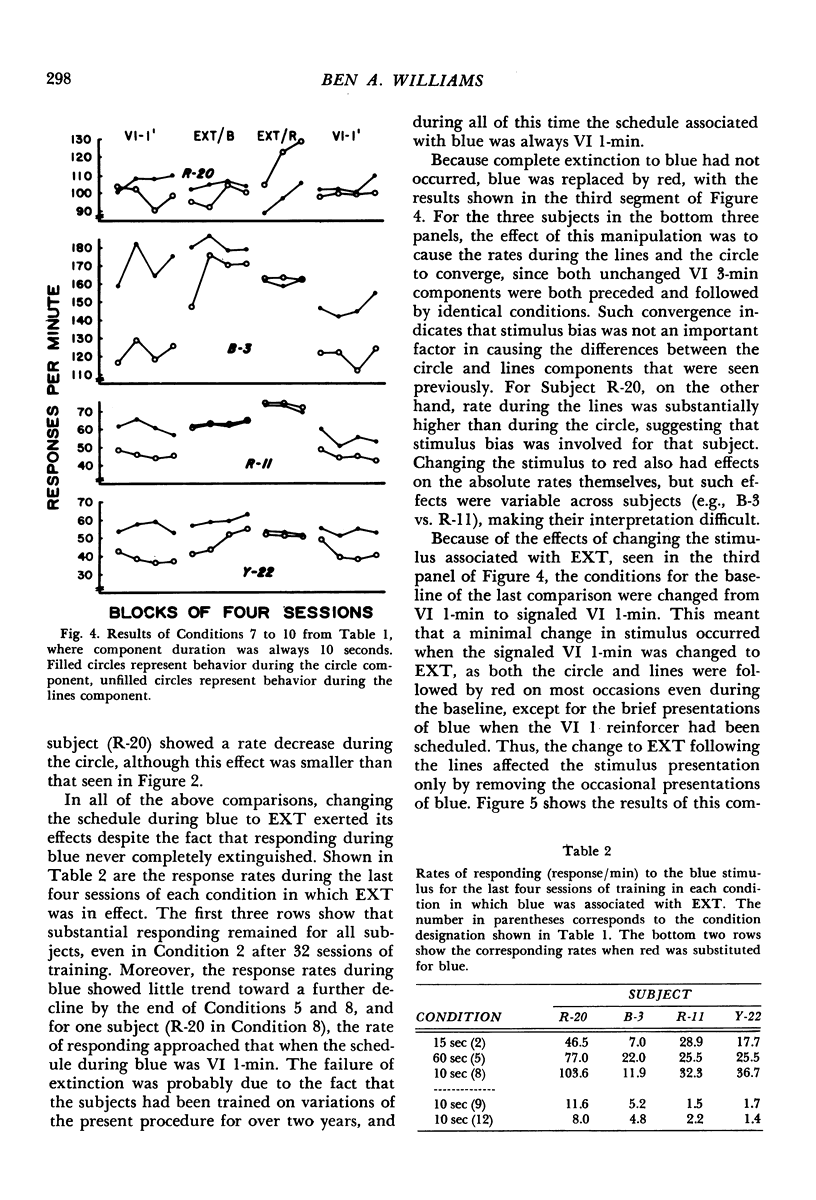
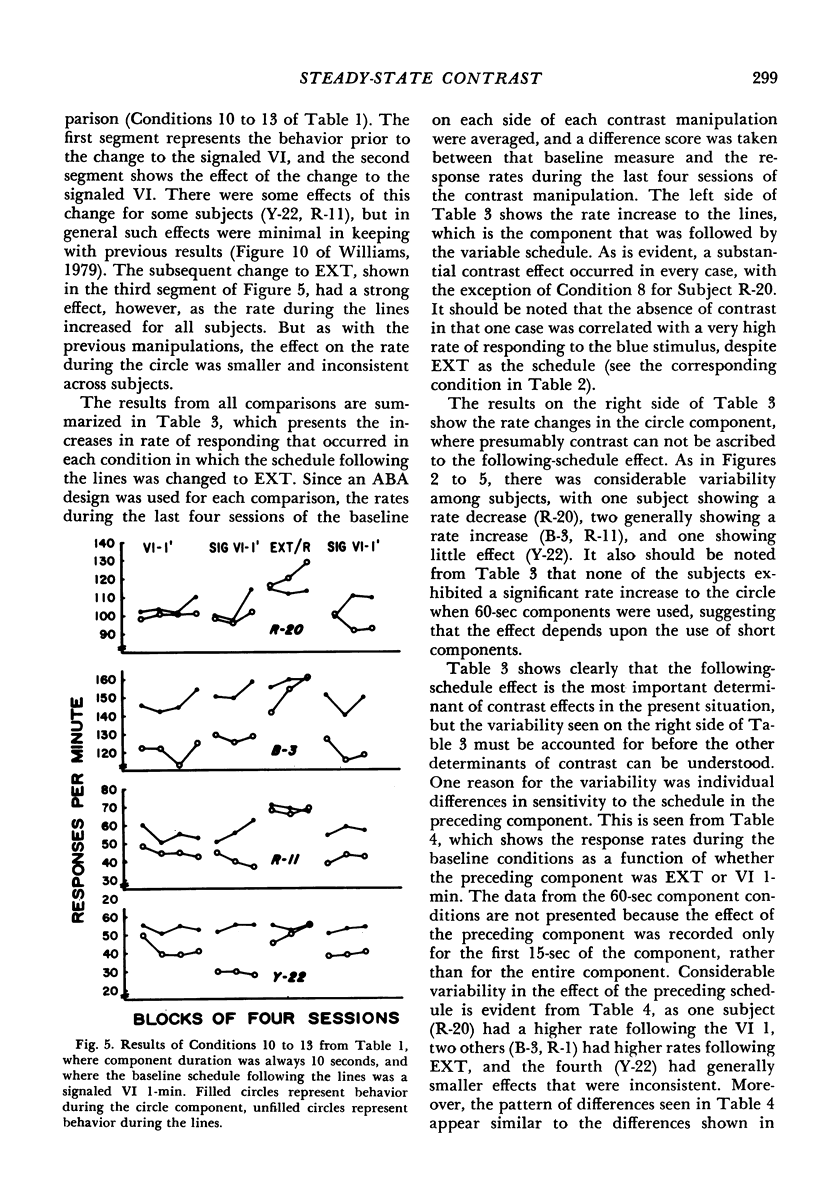
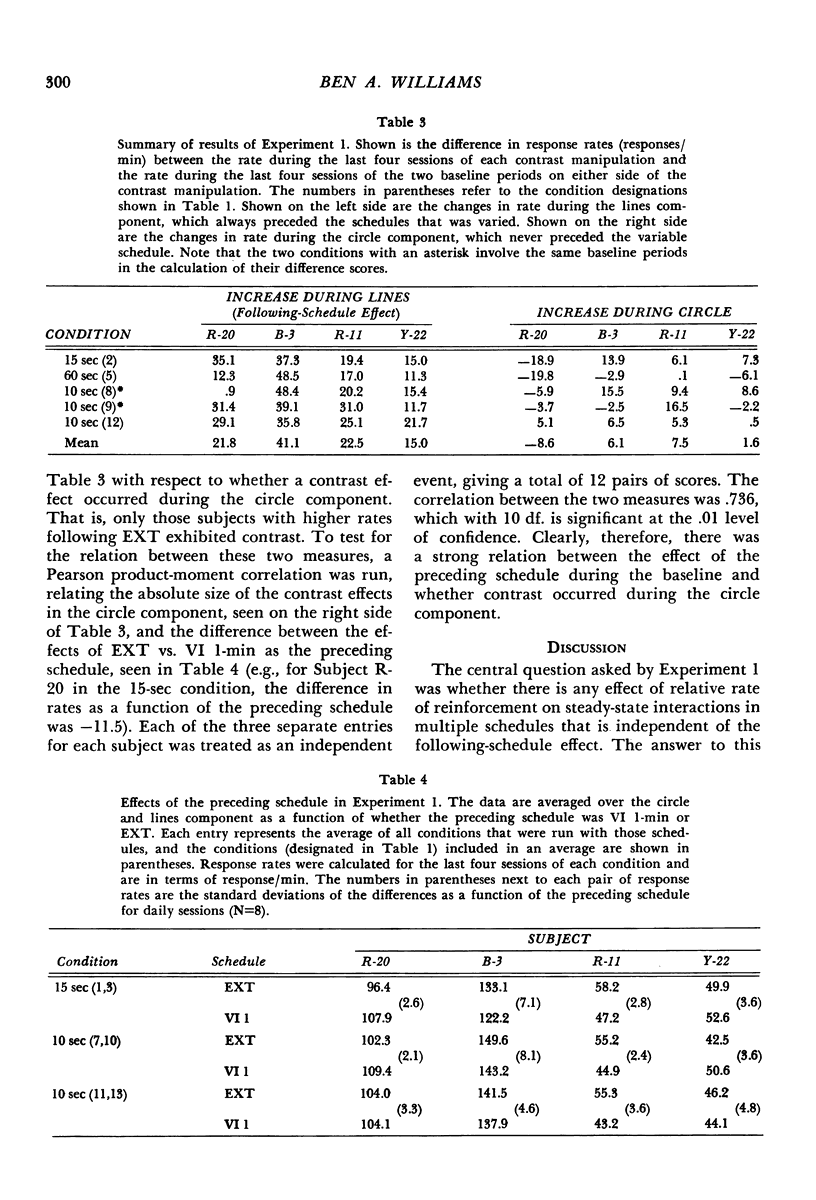
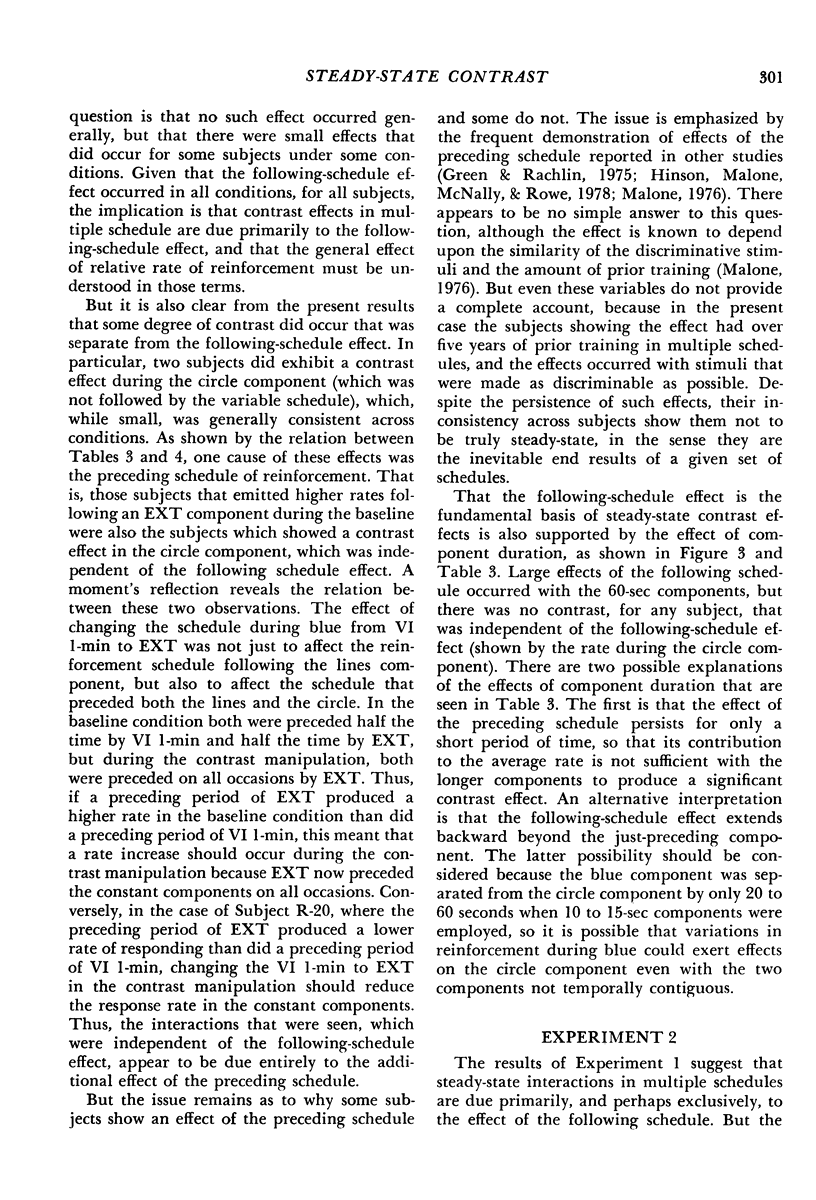
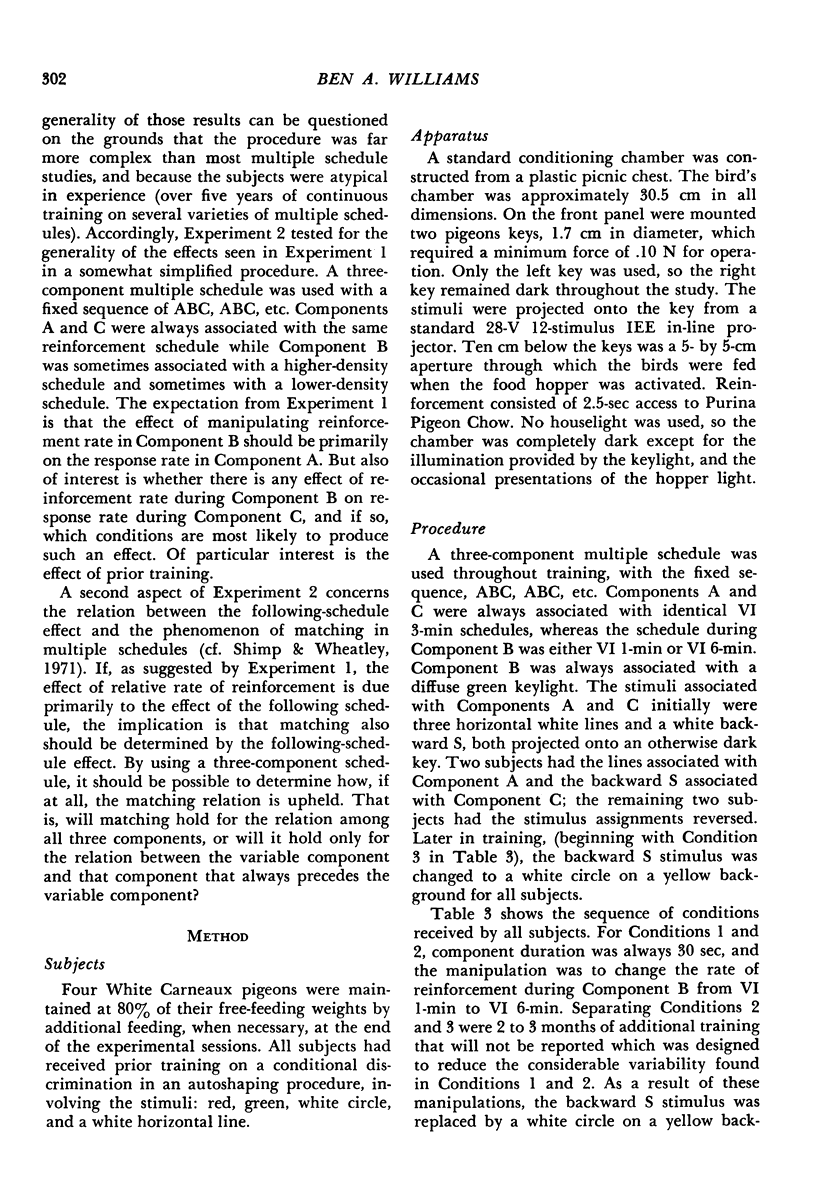
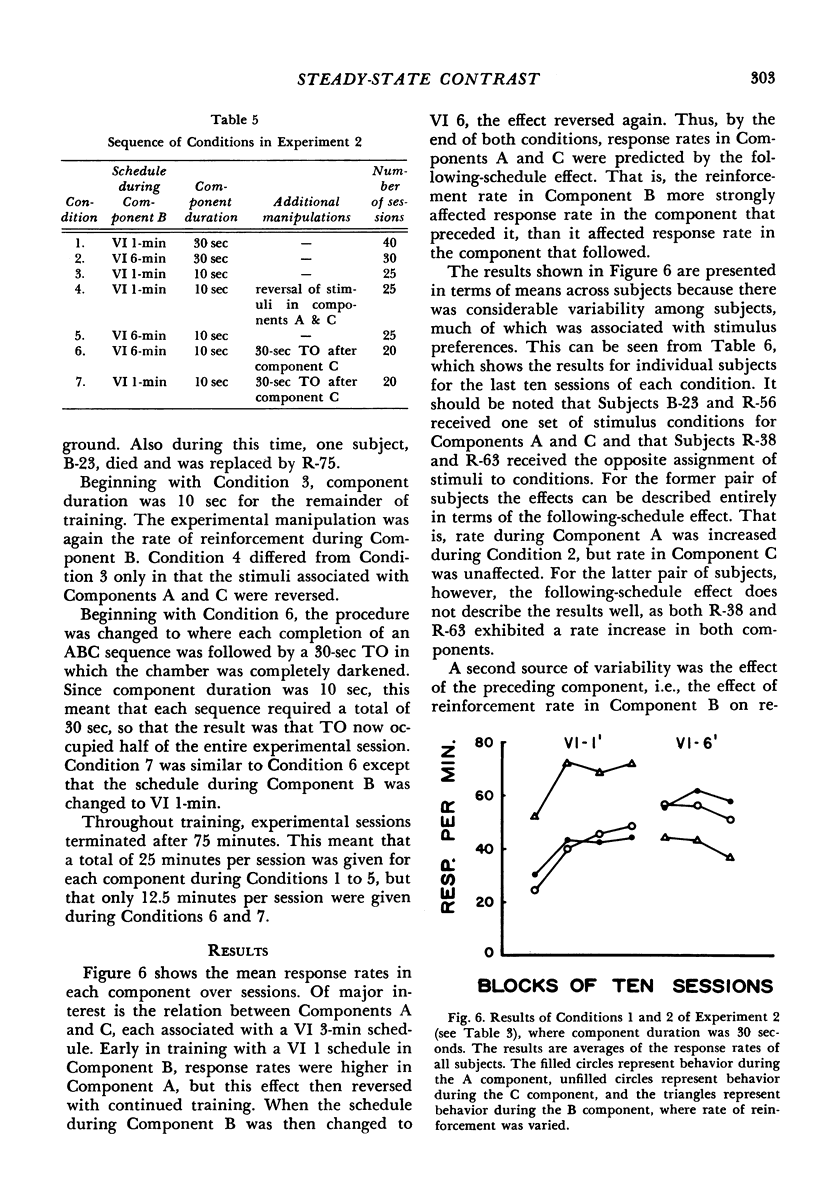
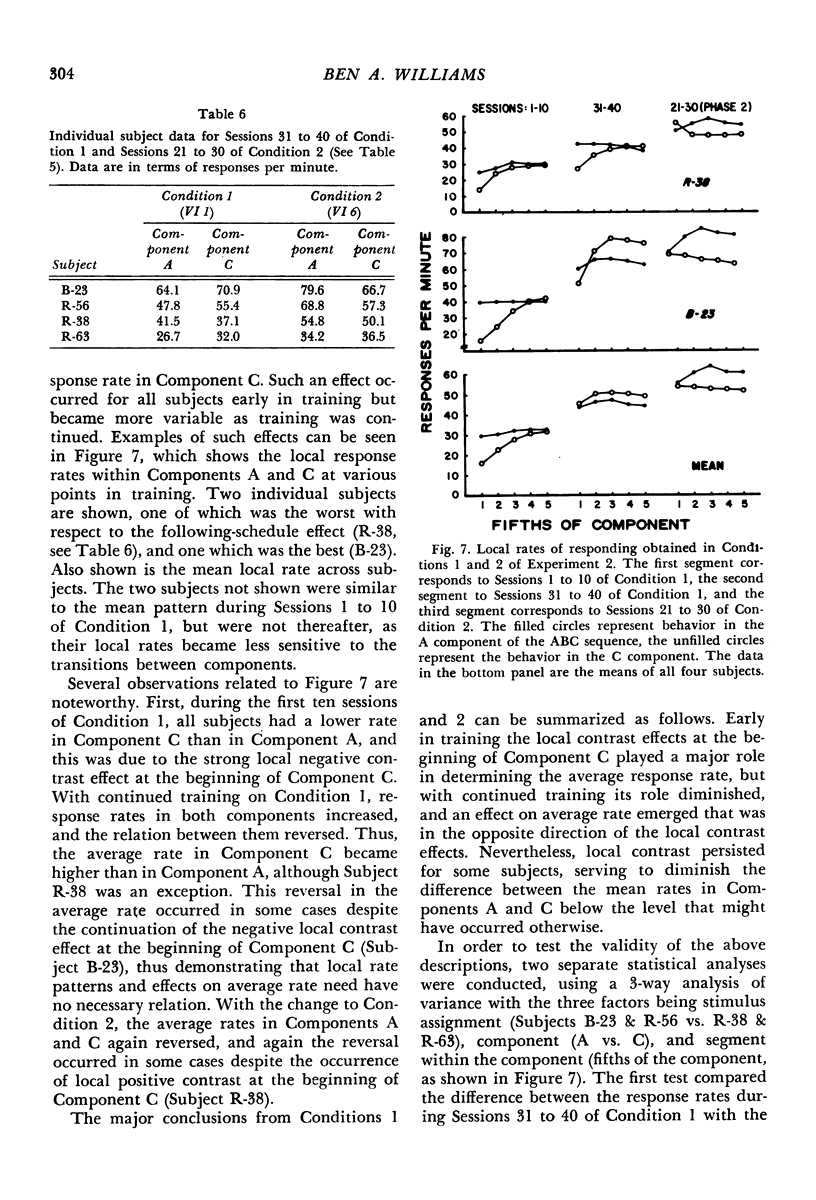
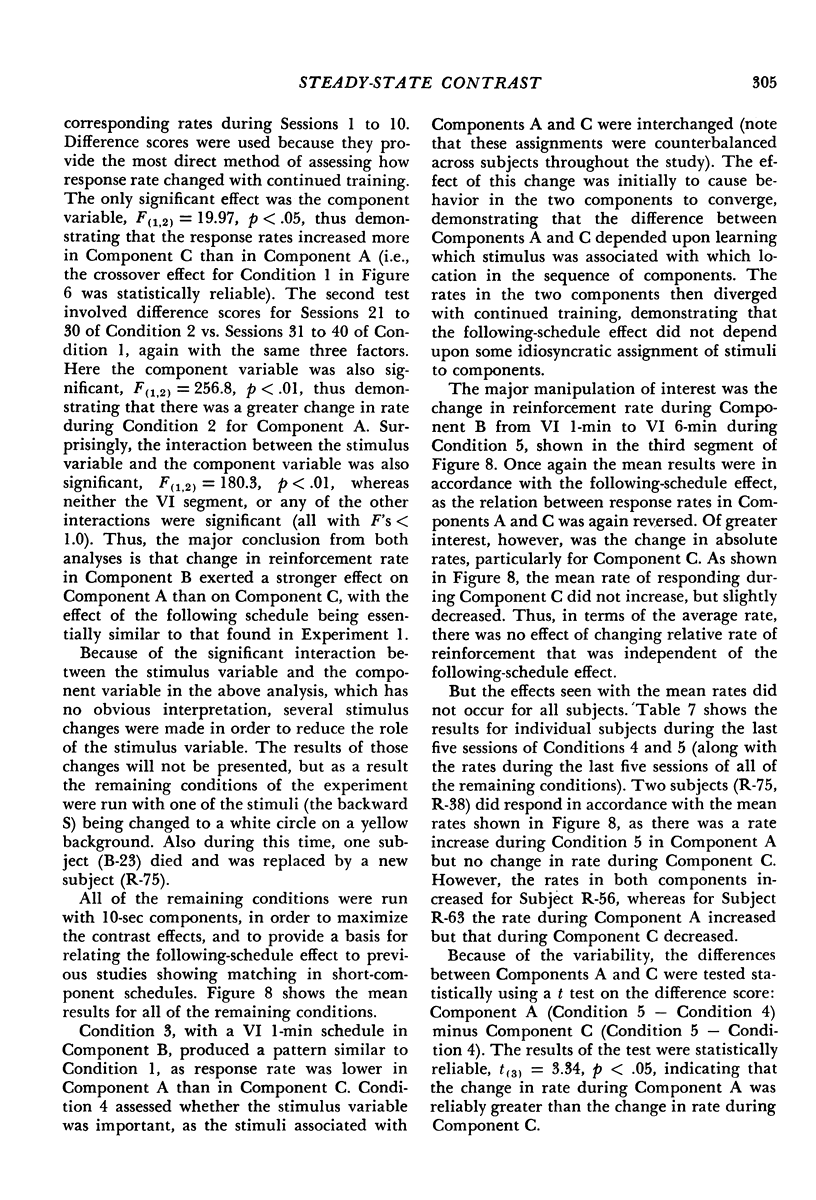
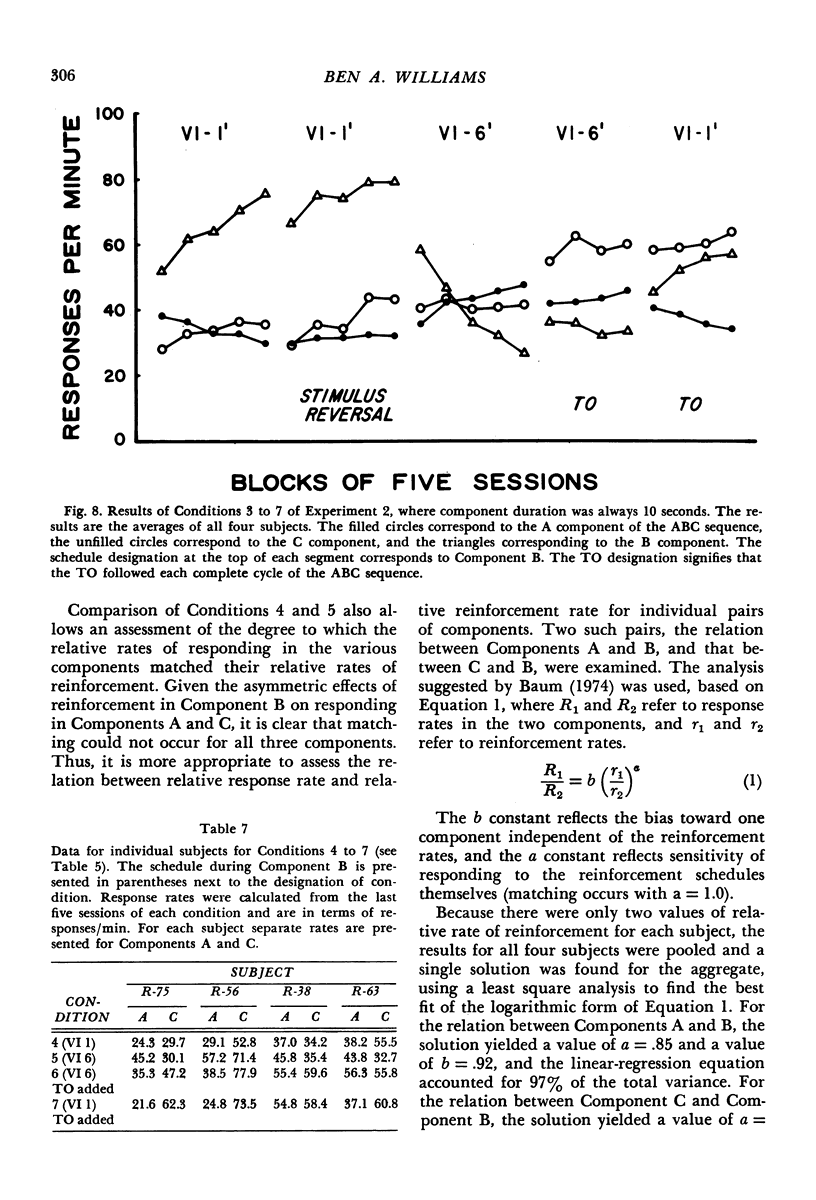
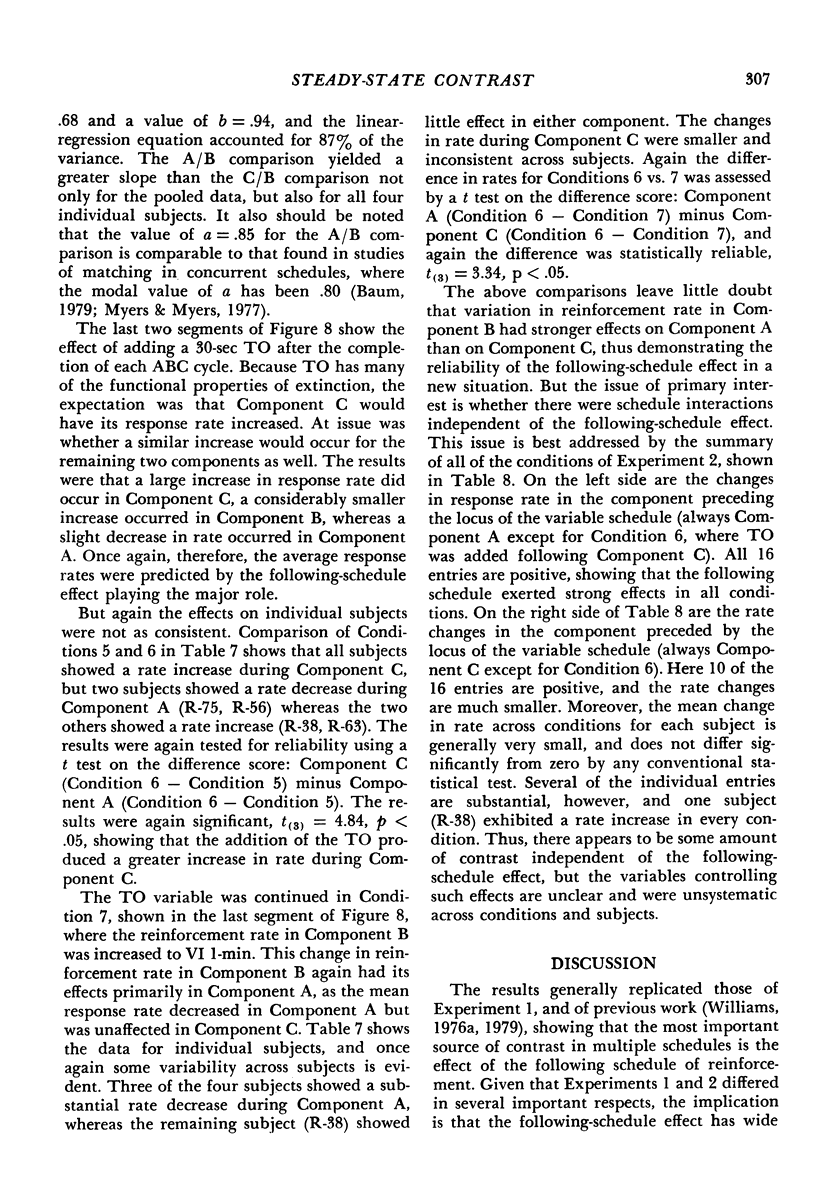
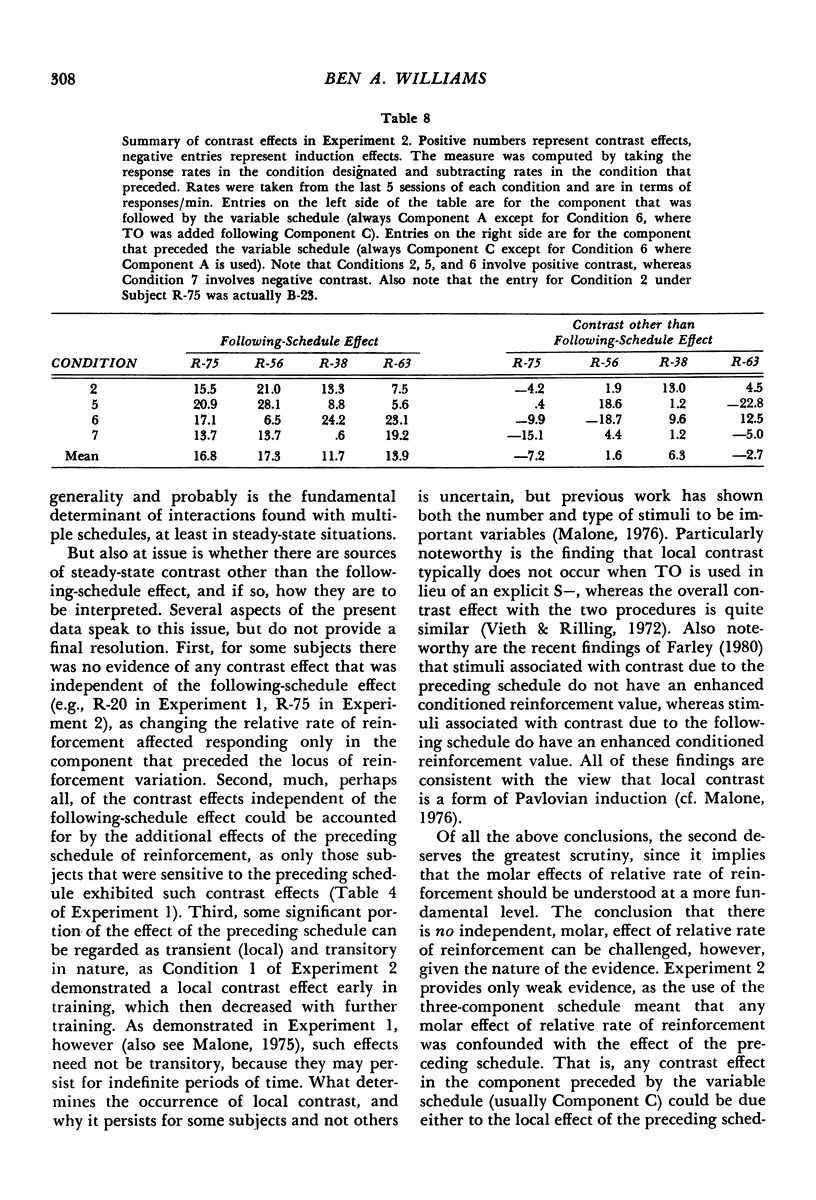
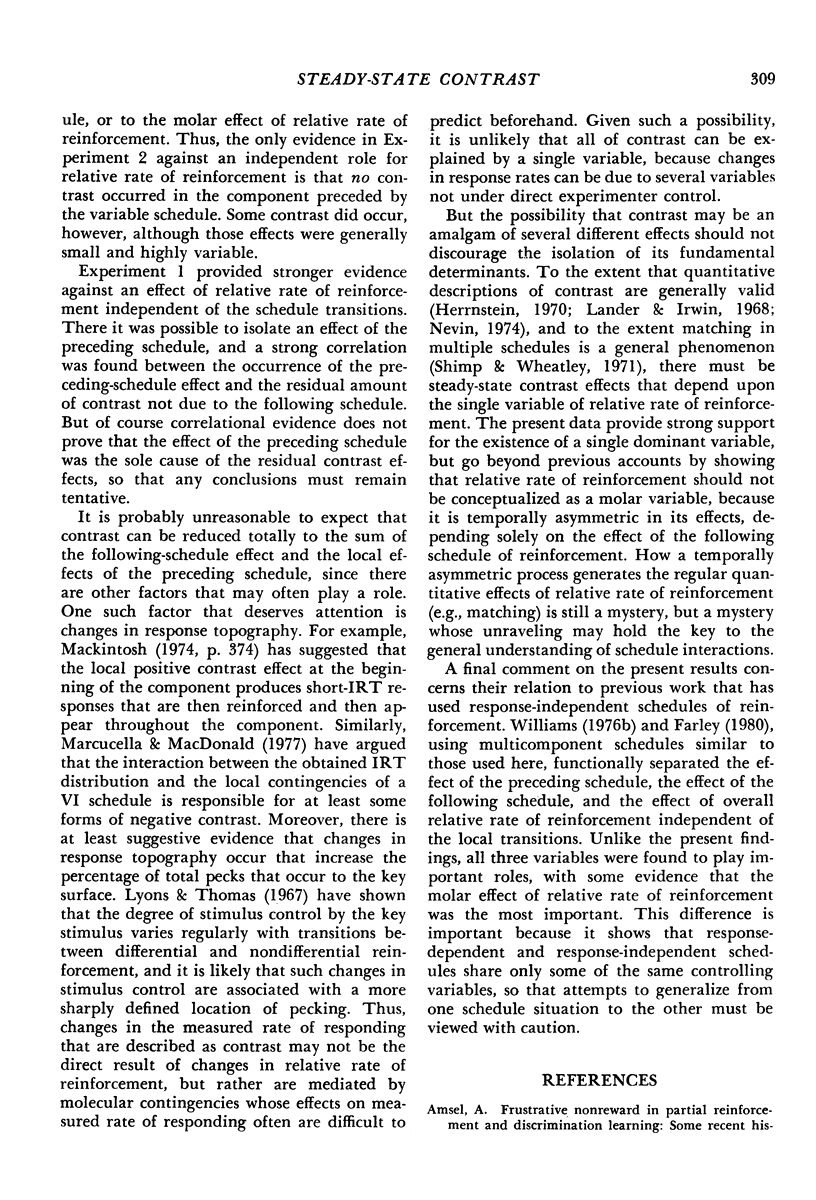
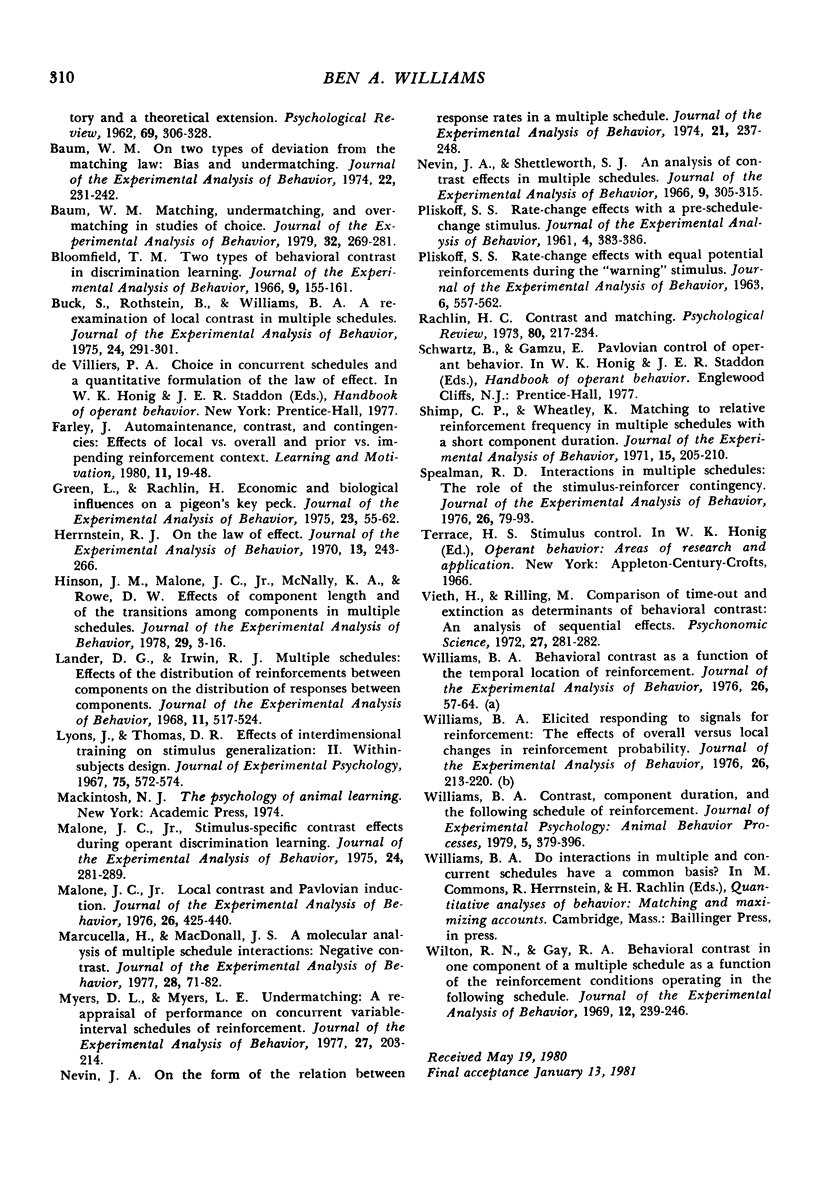
Selected References
These references are in PubMed. This may not be the complete list of references from this article.
- AMSEL A. Frustrative nonreward in partial reinforcement and discrimination learning: some recent history and a theoretical extension. Psychol Rev. 1962 Jul;69:306–328. doi: 10.1037/h0046200. [DOI] [PubMed] [Google Scholar]
- Baum W. M. Matching, undermatching, and overmatching in studies of choice. J Exp Anal Behav. 1979 Sep;32(2):269–281. doi: 10.1901/jeab.1979.32-269. [DOI] [PMC free article] [PubMed] [Google Scholar]
- Baum W. M. On two types of deviation from the matching law: bias and undermatching. J Exp Anal Behav. 1974 Jul;22(1):231–242. doi: 10.1901/jeab.1974.22-231. [DOI] [PMC free article] [PubMed] [Google Scholar]
- Bloomfield T. M. Two types of behavioral contrast in discrimination learning. J Exp Anal Behav. 1966 Mar;9(2):155–161. doi: 10.1901/jeab.1966.9-155. [DOI] [PMC free article] [PubMed] [Google Scholar]
- Buck S. L., Rothstein B., Williams B. A. A re-examination of local contrast in multiple schedules. J Exp Anal Behav. 1975 Nov;24(3):291–301. doi: 10.1901/jeab.1975.24-291. [DOI] [PMC free article] [PubMed] [Google Scholar]
- Green L., Rachlin H. Economic and biological influences on a pigeon's key peck. J Exp Anal Behav. 1975 Jan;23(1):55–62. doi: 10.1901/jeab.1975.23-55. [DOI] [PMC free article] [PubMed] [Google Scholar]
- Herrnstein R. J. On the law of effect. J Exp Anal Behav. 1970 Mar;13(2):243–266. doi: 10.1901/jeab.1970.13-243. [DOI] [PMC free article] [PubMed] [Google Scholar]
- Hinson J. M., Malone J. C., McNally K. A., Rowe D. W. Effects of component length and of the transitions among components in multiple schedules. J Exp Anal Behav. 1978 Jan;29(1):3–16. doi: 10.1901/jeab.1978.29-3. [DOI] [PMC free article] [PubMed] [Google Scholar]
- Lander D. G., Irwin R. J. Multiple schedules: effects of the distribution of reinforcements between component on the distribution of responses between conponents. J Exp Anal Behav. 1968 Sep;11(5):517–524. doi: 10.1901/jeab.1968.11-517. [DOI] [PMC free article] [PubMed] [Google Scholar]
- Malone J. C. Local contrast and Pavlovian induction. J Exp Anal Behav. 1976 Nov;26(3):425–440. doi: 10.1901/jeab.1976.26-425. [DOI] [PMC free article] [PubMed] [Google Scholar]
- Malone J. C. Stimulus-specific contrast effects during operant discrimination learning. J Exp Anal Behav. 1975 Nov;24(3):281–289. doi: 10.1901/jeab.1975.24-281. [DOI] [PMC free article] [PubMed] [Google Scholar]
- Marcucella H., Macdonall J. S. A molecular analysis of multiple schedule interactions: negative contrast. J Exp Anal Behav. 1977 Jul;28(1):71–82. doi: 10.1901/jeab.1977.28-71. [DOI] [PMC free article] [PubMed] [Google Scholar]
- Myers D. L., Myers L. E. Undermatching: a reappraisal of performance on concurrent variable-interval schedules of reinforcement. J Exp Anal Behav. 1977 Jan;27(1):203–214. doi: 10.1901/jeab.1977.27-203. [DOI] [PMC free article] [PubMed] [Google Scholar]
- Nevin J. A. On the form of the relation between response rates in a multiple schedule. J Exp Anal Behav. 1974 Mar;21(2):237–248. doi: 10.1901/jeab.1974.21-237. [DOI] [PMC free article] [PubMed] [Google Scholar]
- Nevin J. A., Shettleworth S. J. An analysis of contrast effects in multiple schedules. J Exp Anal Behav. 1966 Jul;9(4):305–315. doi: 10.1901/jeab.1966.9-305. [DOI] [PMC free article] [PubMed] [Google Scholar]
- PLISKOFF S. S. RATE-CHANGE EFFECTS WITH EQUAL POTENTIAL REINFORCEMENTS DURING THE "WARNING" STIMULUS. J Exp Anal Behav. 1963 Oct;6:557–562. doi: 10.1901/jeab.1963.6-557. [DOI] [PMC free article] [PubMed] [Google Scholar]
- PLISKOFF S. Rate-change effects during a pre-schedule-change stimulus. J Exp Anal Behav. 1961 Oct;4:383–386. doi: 10.1901/jeab.1961.4-383. [DOI] [PMC free article] [PubMed] [Google Scholar]
- Shimp C. P., Wheatley K. L. Matching to relative reinforcement frequency in multiple schedules with a short component duration. J Exp Anal Behav. 1971 Mar;15(2):205–210. doi: 10.1901/jeab.1971.15-205. [DOI] [PMC free article] [PubMed] [Google Scholar]
- Spealman R. D. Interactions in multiple schedules: the role of the stimulus-reinforcer contingency. J Exp Anal Behav. 1976 Jul;26(1):79–93. doi: 10.1901/jeab.1976.26-79. [DOI] [PMC free article] [PubMed] [Google Scholar]
- Williams B. A. Behavioral contrast as a function of the temporal location of reinforcement. J Exp Anal Behav. 1976 Jul;26(1):57–64. doi: 10.1901/jeab.1976.26-57. [DOI] [PMC free article] [PubMed] [Google Scholar]
- Williams B. A. Contrast, component duration, and the following schedule of reinforcement. J Exp Psychol Anim Behav Process. 1979 Oct;5(4):379–396. doi: 10.1037//0097-7403.5.4.379. [DOI] [PubMed] [Google Scholar]
- Williams B. A. Elicited responding to signals for reinforcement: the effects of overall versus local changes in reinforcement probability. J Exp Anal Behav. 1976 Sep;26(2):213–220. doi: 10.1901/jeab.1976.26-213. [DOI] [PMC free article] [PubMed] [Google Scholar]
- Wilton R. N., Gay R. A. Behavioral contrast in one component of a multiple schedule as a function of the reinforcement conditions operating in the following component. J Exp Anal Behav. 1969 Mar;12(2):239–246. doi: 10.1901/jeab.1969.12-239. [DOI] [PMC free article] [PubMed] [Google Scholar]


